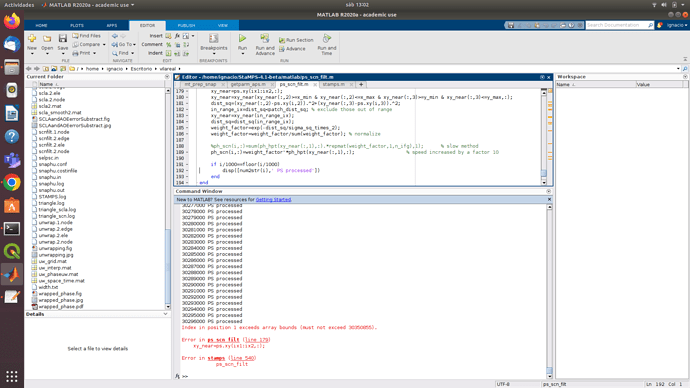hello I have the following error in step 8 of the processing with Stamps:
Index in position 1 exceeds array bounds (must not exceed 30350855).
Error in ps_scn_filt (line 179)
xy_near=ps.xy(ix1:ix2,:);Error in stamps (line 540)
ps_scn_filt
I use PAZ images and the following parameters:
Bridge
(extremely educated guesses by BW and MS)
| Parameter | Default | Used |
|---|---|---|
max_topo_err |
20 | 10 |
filter_grid_size |
50 | 40 |
clap_win |
32 | 16 |
scla_deramp |
‘n’ | ‘y’ |
percent_rand |
20 | 1 |
unwrap_grid_size |
200 | 50 |
unwrap_time_win |
730 | 88 |
scn_time_win |
365 | 88 |
scn_wavelength |
100 | 50 |
unwrap_gold_n_win |
32 | 16 |
can someone help me to solve the error?
